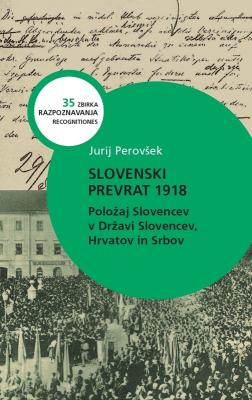THE SLOVENIAN TURNING POINT OF 1918: Slovenian Position in the State of Slovenes, Croats and Serbs
Keywords:
May Declaration, The State of Slovenes, Croats and Serbs, national-political aspect, economic aspectSynopsis
With the establishment of the National Council for Slovenia and Istria on 16 and 17 August 1918 in Ljubljana and in the final year of World War I, the name »Slovenia« asserted itself politically in the international setting. Thereafter the Slovenian national movement, encouraged by the May Declaration of 30 May 1917, began the preparations for the establishment of an independent Yugoslav state outside of the Habsburg Monarchy. The National Council for Slovenia and Istria was a politically motivated supra-party organisation. It was established with the purpose to express – based on the May Declaration's demand for the state independence of the Habsburg Yugoslavs (still in the context of the Monarchy at that time) – the will of the Slovenian people with regard to the national self-determination and establishment of an independent Yugoslav state community. It was led by Dr Anton Korošec, the foremost Slovenian politician of that period and the head of the catholic All-Slovenian People's Party (hereinafter the VLS). Slovenians undertook multi-faceted preparations (organisational, propagandist, economic, and financial) to leave the Monarchy. Simultaneously, in October 1918 the Slovenian politics also publicly discussed the question of the future Yugoslav state's regime. The VLS argued for an autonomist regime and a republican state of Habsburg Yugoslavs (its state-legal plan was outlined by Fran pl. Šuklje). The most prominent representatives of the liberal Yugoslav Democratic Party (the JDS), headed by its representative Dr Ivan Tavčar, opted for a unitarian, centralist, and monarchic Yugoslav community, in conjunction with the Kingdom of Serbia. The Yugoslav Social Democratic Party (the JSDS) did not consider the question of the Yugoslav state regime at that time, however.

Published
Print ISSN
License

This work is licensed under a Creative Commons Attribution-NonCommercial-NoDerivatives 4.0 International License.

